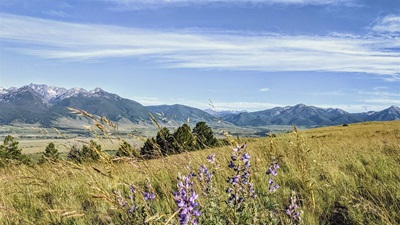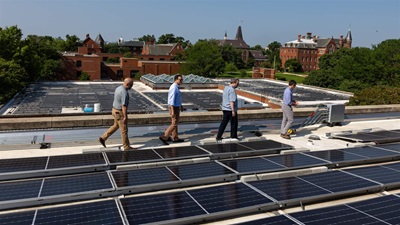Smart Growth: How Wildlife Corridor Planning Pays Off for Local Communities
New report highlights opportunities for county and municipal governments to lead on habitat connectivity

Science increasingly underscores the benefits to people and nature of habitat connectivity—networks of lands and waters protected from development, where wildlife can follow their ancestral migration routes. For people, these connected natural areas protect clean drinking water supplies, create greenways that link neighborhoods, boost community well-being, and increase property values.
But throughout the U.S., changing land use and weather patterns and expanding sprawl are encroaching on wildlife habitat, and, in some places, destroying it. Infrastructure, including roads and fences, along with commercial and residential development, presents major barriers to fish and wildlife and contributes to wildlife-vehicle collisions.
Local governments, which have authority over land use planning on most nonfederal land, now have a new planning resource. A recently released Pew-commissioned study, “Integrating Wildlife Habitat Connectivity Into Local Government Planning,” authored by the nonprofit Center for Large Landscape Conservation, compiles case studies, policy tools, best practices, and recommendations regarding how state and local elected officials, county and municipal agency staff, and nongovernmental partners can work together to safeguard connected habitat.
The study recommends that officials:
- Map wildlife movement and seasonal routes across jurisdictions.
- Update local and state policies to protect priority corridors for big game, fish, and other species.
- Integrate connectivity goals into comprehensive land use plans.
- Fund corridor conservation via dedicated local, state, and public-private sources.
- Address development and infrastructure that serve as barriers to wildlife movement and migration—for example, by building wildlife crossings (overpasses and underpasses designed to allow animals to cross roads safely).
Recognizing that every state, county, and municipality faces unique challenges and opportunities, the report offers flexible options that can be tailored to a given jurisdiction. Ultimately, these resources and recommendations empower local governments to better steward natural resources while guiding smart, sustainable growth that enhances habitat connectivity.
Anna Wearn is an officer and Nic Callero is a senior officer with The Pew Charitable Trusts’ U.S. conservation project.














